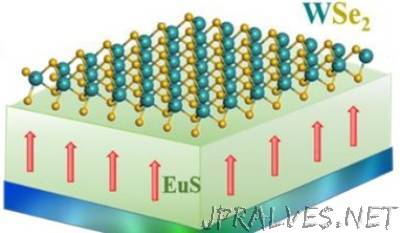
“In the world of semiconductor physics, the goal is to devise more efficient and microscopic ways to control and keep track of 0 and 1, the binary codes that all information storage and logic functions in computers are based on. A new field of physics seeking such advancements is called valleytronics, which exploits the electron’s “valley degree of freedom” for data storage and logic applications. Simply put, valleys are maxima and minima of electron energies in a crystalline solid. A method to control electrons in different valleys could yield new, super-efficient computer chips. A University at Buffalo team, led by Hao Zeng, PhD, professor in the Department of Physics, worked with scientists around the world to discover a new way to split the energy levels between the valleys in a two-dimensional semiconductor. The work is described in a study published online today (May 1, 2017) in the journal Nature Nanotechnology. The key to Zeng’s discovery is the use of a ferromagnetic compound to pull the valleys apart and keep them at different energy levels. This leads to an increase in the separation of valley energies by a factor of 10 more than the one obtained by applying an external magnetic field.”
